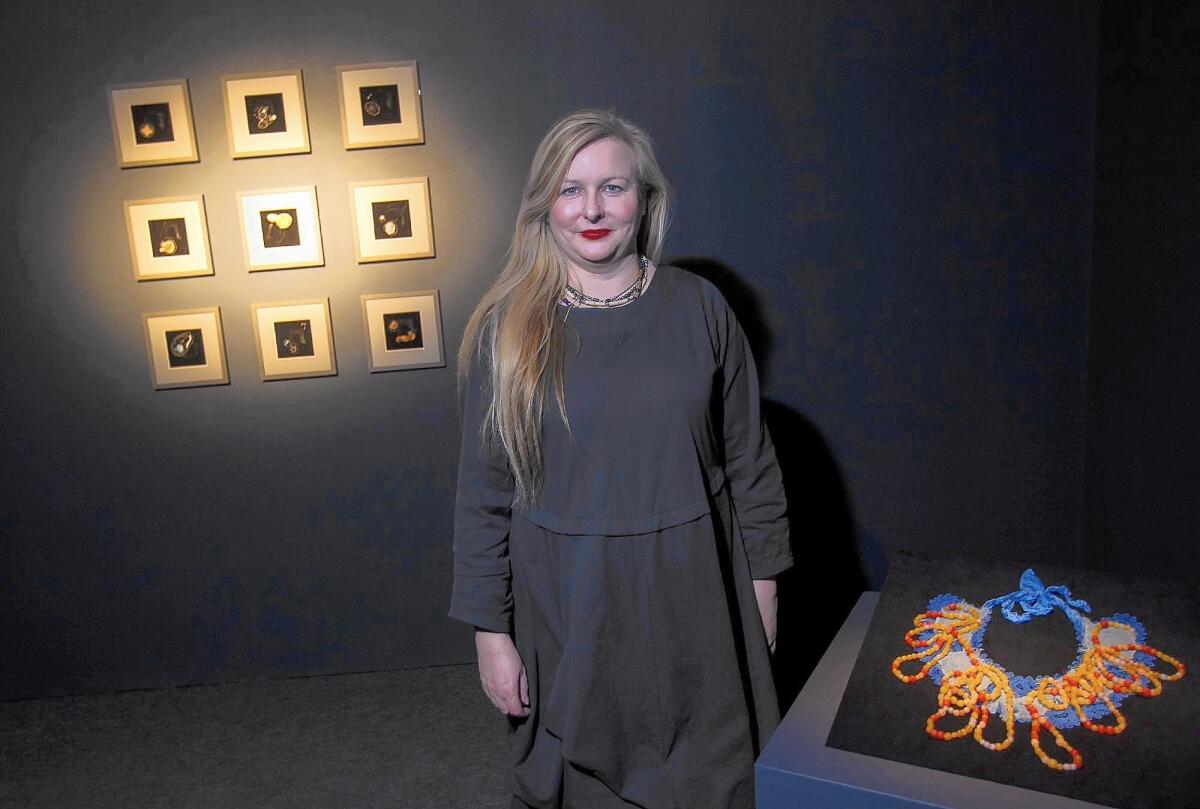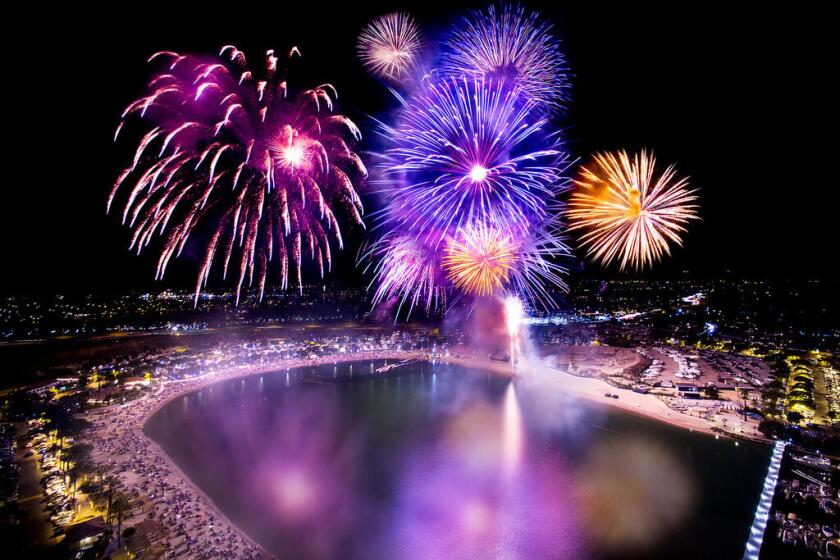The art is alive at UC Irvine exhibit

Anna Dumitriu is showing her piece, “Engineered Antibody,” at the “Wetware” art exhibit at UC Irvine’s Beall Center for Art + Technology. The artwork is made with amino acids, polymer clay, jewelry wire, cotton calico, vintage tatted linen lace, silk and embroidery.
- Share via
The new exhibit at UC Irvine’s Beall Center for Art + Technology is a place where art has come to life — literally.
The show, “Wetware: Art Agency Animation,” opened Saturday, featuring nine artists who created works of synthetic biology art — pieces made out of biological or electronics materials.
Amino acids, contained bacteria, enzymes, microbial fuel cells, cell phone motors and other components were integrated into more than a dozen artworks.
“Nearly all the artwork here is alive,” said Jens Hauser, one of the exhibit’s curators. “It is artwork being an organism. It is not art for the market, but for the market of ideas. The food for thought.”
Three of the nine artists developed their pieces for “Wetware” during a three-week UCI residency in October and November.
British artist Anna Dumitriu and a duo from Amsterdam, Evelina Domnitch and Dmitry Gelfand, were chosen from a pool of about 40 applicants when the university put out a call in July.
Originally, the residency program was meant for one artist. But when “Wetware’s” curators, Hauser and David Familian, received the applications and project proposals during the summer, they were so impressed by the talent that they decided to feature more works.
During the three artists’ stay in Irvine, they were paired with UCI researchers to develop their scientific art.
“This was the first time that our lab has worked with artists,” said Elliot Hui, a UCI associate professor who worked with Domnitch and Gelfand in the Hui Lab for biological microtechnology. “Art can definitely help communicate scientific concepts, but in a more beautiful and relatable way.”
The Hui Lab helped generate a liquid solution that would glow for Domnitch and Gelfand’s piece, titled “Luminiferous Drift.” The artwork was inspired by images of a swirling, hexagon-shaped jet stream above Saturn’s north pole.
On the exhibit’s opening day Saturday, Gelfand presented the duo’s work to guests, using a syringe to pour drops of the solution into bath water in a spinning, cylindrical container. The solution — which includes materials such as horseradish enzyme, luminol, sodium hydroxide and hydrogen peroxide — glowed on contact with the water.
As it spun in the bath, the solution formed a hexagonal shape meant to visualize the same movements above Saturn.
“The rotating bath and a disc at the bottom are both spinning at different speeds, allowing it to create that hexagonal shape,” Gelfand said. “We very much wanted our piece to be a guided, sensory experience.”
Before the duo leaves Irvine next week, the artists plan to build a system that will automatically drip the solution into the bath, Gelfand said.
Dumitriu collaborated with UCI’s Liu Laboratory for Synthetic Evolution for her artwork, which includes framed sheets of black velvet with yeast imprinted in the fibers and a necklace with beads arranged in the shape of an engineered antibody from the Liu Lab.
Lab members often described the antibody’s components as being similar to beads. The metaphor inspired the idea for Dumitriu’s 452-bead necklace, which also contains the 21 types of amino acids needed to make the actual engineered antibody, Dumitriu said. Within each bead is one amino acid, and the beads are arranged in the precise order as in the antibody.
“I wanted to use these objects to take people through a journey,” Dumitriu said. “A lot of people are nervous to look at art because they think they don’t know how to understand it. But I think the real key is to take time and ask what it is making you feel. That’s how you understand art.”
The exhibit also showcases the works of artists from Austria, Mexico and the United States.
“Wetware” will run until May 7. Admission is free.
The Beall Center for Art + Technology is at 712 Arts Plaza, Irvine.




